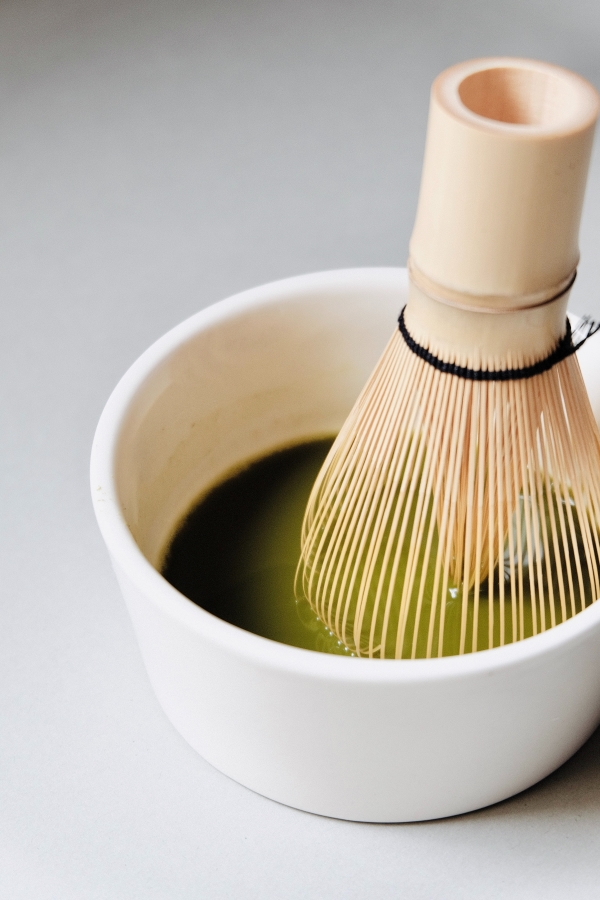Beverage | Japan
Matcha: story and ceremony
Sweet | Drink
Written by: Laura May Bailey
From elite luxury to modern superfood: the ritual and history of matcha tea.
Introduction
In Europe over the past few years matcha has sprung up on many coffee shop menus and the vibrant green colour and delicious creamy flavour have made it a popular choice as an ingredient in baked goods. However, the real story of matcha and its beautiful Japanese symbolism begins over a thousand years ago.
Matcha was first introduced in China around 800 A.D during the Tang Dynasty, and gained popularity during the subsequent Song Dynasty. It’s made by growing the tea plant in an especially shady area for three weeks. After harvesting, the leaves were steamed and pressed into bricks which were easier to transport and trade. Upon delivery they were roasted and ground into powder which could then be mixed with water to make the matcha drink we know today.

A whisk for matcha tea.
Stories tell that three hundred years later, in 1191, a Japanese monk named Eisai returned to his homeland after having spent many years studying Buddhism in China. With him, he brought some seeds and a wealth of knowledge about the cultivation and preparation of matcha. Eisai’s seeds were planted in Kyoto, in the grounds of a temple and during the Kamakura Shogunate period, matcha was seen as a very luxurious product.
Through the work of a sixteenth century Zen student, Murata Juko, and a Zen master, Sen-no-Rikyu, the famous matcha tea ritual was created. The latter crafted the four principles: harmony, respect, purity, and tranquillity.
In addition to these principles, the ceremony also links to Wabi-Sabi, the Japanese aesthetic of accepting the negatives of nature, and opposing perfection, luxury and magnificence. Wabi-Sabi encourages positivity and finding the beauty of minimalism.
To complete the matcha ceremony, four traditional tools are needed. Firstly, the chakin or linen cloth is used to clean the chawan or small bowl. A chashaku (bamboo tea scoop) is used to measure the powder into the chawan l in which the matcha powder and water are mixed with the chasen or iconic round bamboo whisk.
As well as these customary tools, there is a wealth of rituals and etiquette to understand. These unspoken rules differ from household to household, but can include the following. It can be customary to whisk the matcha by moving the chasen in a W or M motion. Most traditional ceremonies include a host (teishu) and lead guest (shokyaku). The shokyaku may be responsible for communicating with other guests on behalf of the teishu. For the matcha ceremony, every detail of the room is meticulously planned and curated, therefore it is considered polite to offer compliments in acknowledgment of the effort.
Further discovery
For more information about matcha in Japan's history: